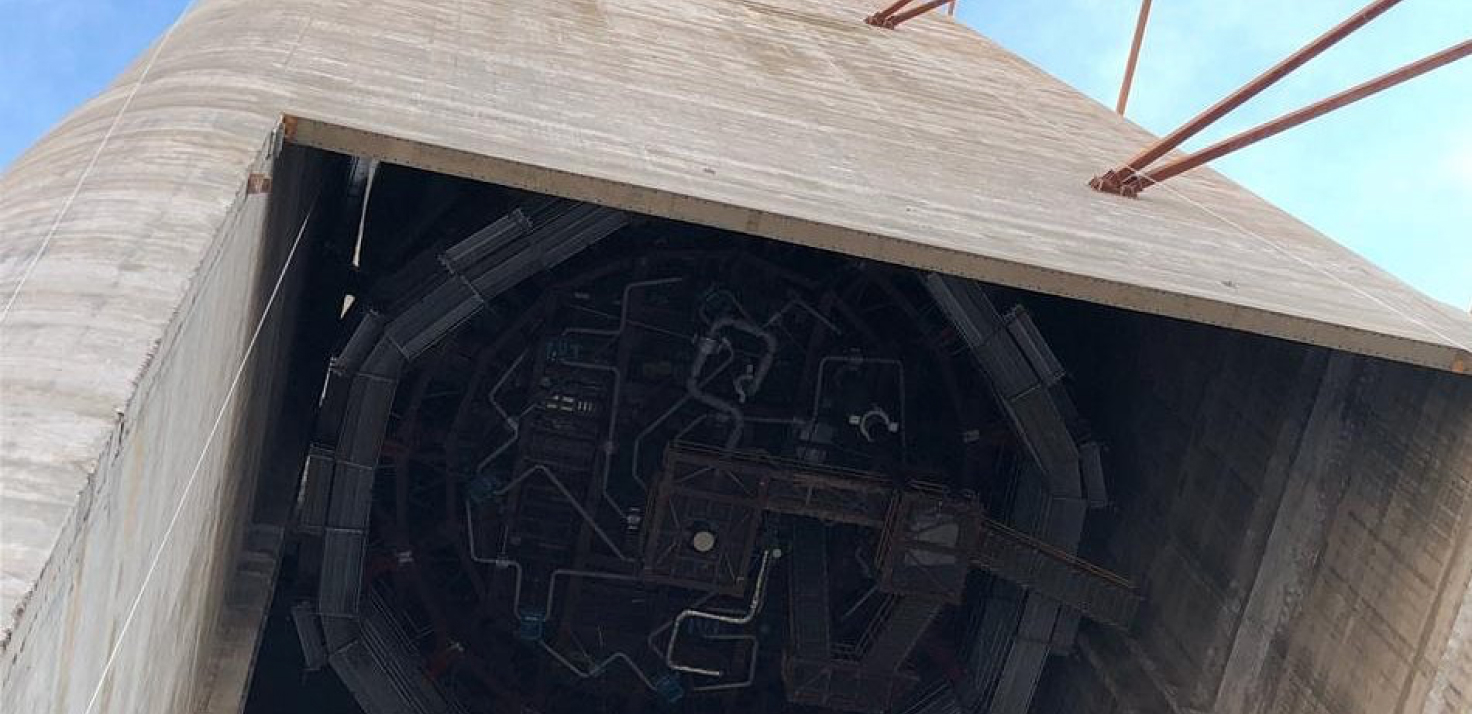5 March, 2020

n the last few weeks, the thermosolar project that Abengoa and ACCIONA are building in the Atacama Desert in Chile completed one of the key milestones prior to its upcoming commissioning: raising and installing its solar receiver at a height of 220 meters. It was placed on top of the complex’s central tower, which is surrounded by 10,600 heliostats.
The maneuver was completed over the last few weeks with the positioning of the receiver (a highly complex part that weighs 2,300 tons) on the caisson octagon, located at a height of 220 meters atop the central tower of the thermosolar power plant. The receiver’s function is to concentrate the solar radiation reflected from the heliostats that are arranged around the 250-meter tower, in that way heating the salts that will be stored to generate electricity.
The complete maneuver took a week, starting with the receiver’s entry into the cavity located at the base of the tower. Once inside, 16 industrial hydraulic jacks were used to lift it up to the top of the building. The ascent was made at no more than 5 meters per hour, for safety reasons and due to the technical complexity of the entire procedure.
“We’re very proud to have achieved this milestone. We continue to move forward without rest in the construction of this iconic project for the region,” said Fernando González, CEO of Cerro Dominador. “It’s the first time in the world that this maneuver has been performed for this type of project,” explained Anbengoa’s project director for Cerro Dominador, Héctor Berlangieri, who also said that the conceptual and engineering idea of the operation came from the Spanish company.
For his part, ACCIONA site manager for the project Luis Pérez explained the great technical complexity of this lifting maneuver. “You need total control over the receiver’s speed of ascent, limited to about 5 meters per hour. We’re really proud to be participating in a project as unique as this one and of the commitment that everyone has shown to make it a success.”